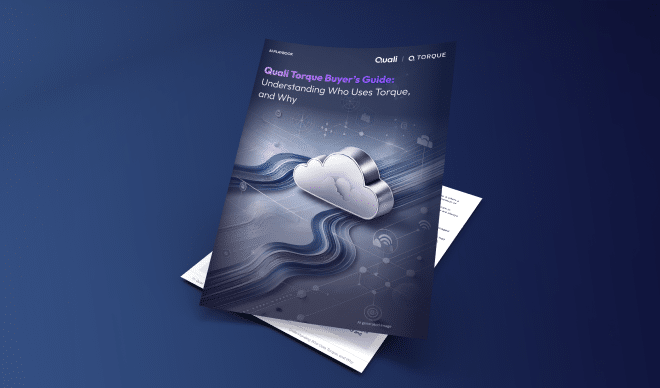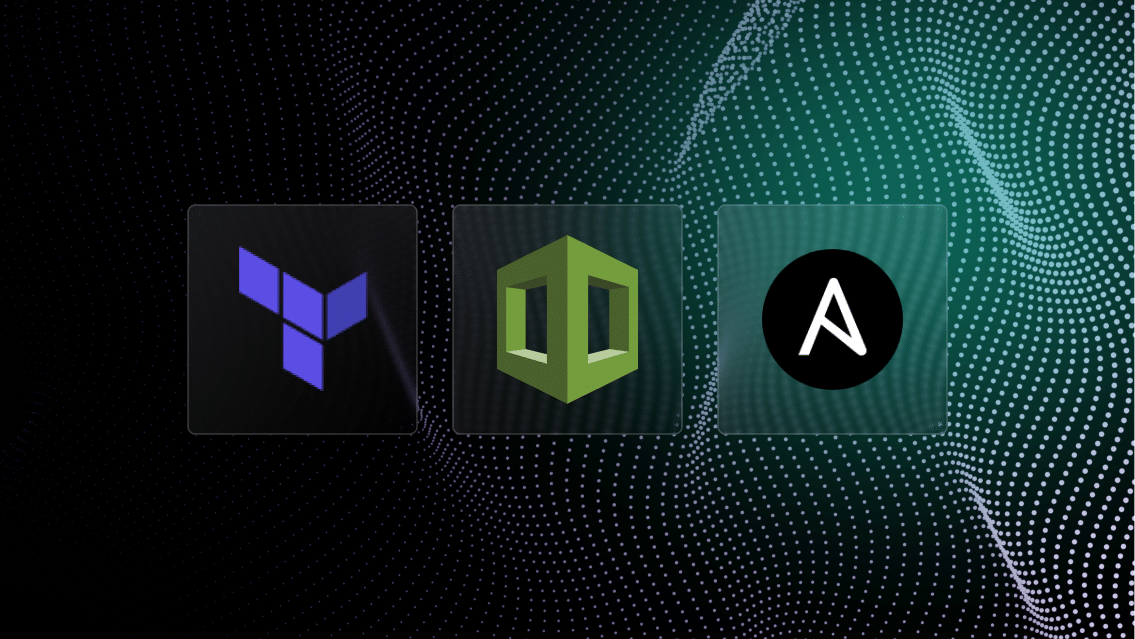Enhance Your FinOps Results with Agentic AI Tools
Quali Torque helps FinOps teams enhance cloud cost optimization with AI insights into savings opportunities and automation to prevent waste proactively.
Leverage Agentic AI to Optimize the Operations in Your FinOps Strategy

Cloud Cost Governance
Torque denies the deployment of over-sized, redundant, or other resources that exceed your policies for cloud costs allowed.

AI Insights
Torque uses AI to identify actively deployed cloud resources that are unused so you can act on savings opportunities quickly and easily.

Lifecycle Automation
Torque automates the provisioning and termination of temporary workloads to eliminate the risk of idle cloud infrastructure costs.
See How Quali Torque Works
This brief demo shows how Quali Torque helps DevOps teams accelerate productivity while optimizing cloud costs.

How Quali Torque Uses AI to Improve Cloud Cost Optimization
Cloud Cost Governance
Torque enforces custom policies by automatically denying the provisioning of cloud resources that create waste so your teams can only run environments that will keep them within budget.
Lifecycle Automation
Torque automates the provisioning and termination for routine, non-production environments to align runtimes with actual resource need and eliminate the risk of human error driving up waste from idle cloud resources.
AI Insights
Torque monitors the state of all infrastructure your teams deploy, identifies those that are unused, and calculates the cost savings from terminating these resources so administrators can evaluate the impact on their team before cutting wasted costs.
Shareable Infrastructure
Torque prevents wasted costs from the concurrent deployment of identical infrastructure by making resources shareable, and enforces policies to limit the deployment of concurrent resources automatically.
Cost Tracking with Context
Torque dashboards track cloud costs based on the resources provisioned and the runtime set by the user, then maps those costs to the user, team, cloud platform, and other parameters providing the context needed to make informed decisions about costs.
Take Torque for a Test Drive
The Torque Playground allows you to build & launch real cloud environments with no email or credit card required.
Still have questions? Our team is here to help
Book a demo to learn more about how Quali Torque supports DevOps teams
Frequently Asked Questions
Torque executes the provisioning of cloud infrastructure, monitors that infrastructure, and can perform actions to modify the state of live infrastructure at any point.
Torque’s role in the infrastructure lifecycle provides a unique opportunity to implement FinOps principles into the day-to-day operation of infrastructure, while providing visibility and reporting to identify new savings opportunities.
To implement FinOps principles, Torque’s custom policies can automatically deny the launch of any infrastructure that violates the user’s unique standards. Examples include policies denying specific cloud instance sizes or types and setting thresholds on maximum runtimes, concurrent identical infrastructure services, or maximum expected costs.
Torque’s AI tools also act as a FinOps assistant for engineering teams. For example, Torque’s AI tools identify actively deployed cloud resources that are sitting idle and calculate the wasted costs for those resources so infrastructure admins can terminate them rapidly.
As a result, FinOps teams can expect increased cloud cost savings due to increased efficiency in the operation of cloud infrastructure among their teams.
Torque continuously monitors deployed environments and provides detailed visibility into resource usage, cost trends, and idle infrastructure.
Using Torque’s cost dashboards, FinOps teams can track month-to-date cloud costs to the teams, users, and environments responsible so they can eliminate waste proactively
Yes. Torque supports policy-as-code to enforce cost control rules—such as environment auto-expiration, tagging requirements, and restrictions on over-provisioned resources. These policies can be applied globally or scoped to specific teams or workloads.
Yes. Since Torque executes the provisioning of infrastructure, the platform can apply tags to that infrastructure as it is provisioned.
Torque provides a simple form for provisioning infrastructure, which includes a restricted pick-list of tags that are defined by administrators from which users can select the appropriate tag when deploying an environment. Admins can also set default tags so users can deploy environments quickly and easily, without stopping to set the tag themselves. This eliminates the risk of missing or incorrect tags to improve accuracy and detail on FinOps reporting tools.
Torque also monitors the state of live infrastructure and can apply new tags, so users can update tags if needed without having to shut down and re-deploy the workload.
With environment-level cost tracking and usage history, Torque enables FinOps teams to analyze spend by team, project, or environment blueprint. These insights improve forecasting accuracy and help align cloud costs with business budgets.
Torque tracks environment usage and resource consumption at the team or user level, making it easier to implement chargeback or showback processes. FinOps teams can generate reports that attribute costs back to the appropriate business units.
Yes. While Torque integrates with Terraform, it abstracts much of the complexity through reusable blueprints and workflows. This enables FinOps and platform teams to monitor, govern, and optimize infrastructure without writing IaC themselves.
Yes. Torque integrates with major cloud providers (AWS, Azure, GCP) and provides a unified layer for environment governance, cost tracking, and policy enforcement across clouds, supporting FinOps visibility and control in heterogeneous environments.


